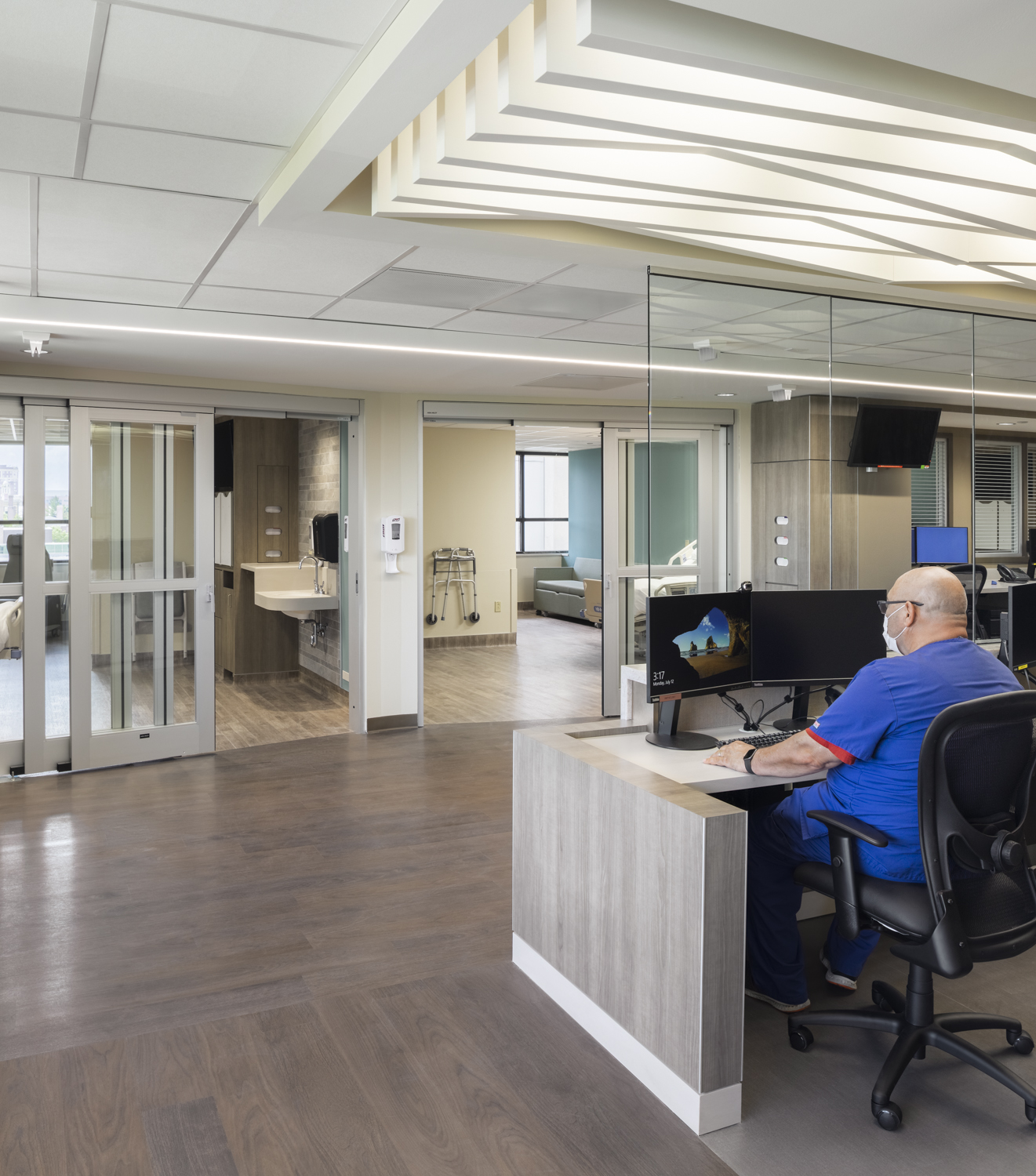When a hospital grows, it needs a more thoughtful approach to the needs of staff and patients alike.
By Christopher Haedt
AIA, NCARB, ACHA, LEED AP BD+C
Principal, Columbus Healthcare Practice Group Leader
According to 2023 SG2 data, over the next 10 years, inpatient hospital volumes are projected to increase by 2 percent. At a high level, this national benchmark study tells us if beds are built to meet backward-looking data, they will be undersized and at capacity day one. To handle this shift, health systems need to improve care coordination across the facility. And that requires a better understanding of what types of patients enter these facilities, and why. Is it through the ED? Is it through surgical or interventional services?
Care coordination aligns with the principles of value-based care, which aims to improve the quality, safety, efficiency, and effectiveness of health care while reducing costs and waste. By coordinating care across providers and settings, we can help reduce duplication, fragmentation, errors, and gaps in care, as well as improve patient satisfaction, engagement, and empowerment [1].
Here are five strategies for physical space that help accommodate shifts in acuity and improved care coordination.
1. Optimize Clinical Operations
Clinicians are constantly being asked to do more, so hospitals must get the products they need as close as possible to the patients they serve. The key is reducing touch points; automation for supply and delivery is one answer. Specialists are a different challenge, but technology added to rooms can facilitate easier remote consultation between different specialists, clinical teams, and patients. And most important is building the appropriate staffing environments to reinforce collaborative care, and emotional support, and areas for respite.
2. Design for Flexibility
While it’s impossible to predict the future, hospitals must anticipate and adapt, so clinical spaces can handle “what if?” scenarios. It may require rethinking the way we construct, supply, and serve each space. Avoid creating static spaces that can’t fluctuate and require rework to make them what you need. Instead, think how space can be adaptive. Modular, plug and play concepts help clinical spaces do what we need when the demand comes. Additionally, the technology of these rooms will be forever changing. Rooms must allow for future adaptations – to pivot from analog to digital to whatever else the future may hold.

3. Consider Adjacencies
Focus on getting the right patients to the right areas for the right level of care. Think through how to get the clinical team working at the top of their licenses within specific spaces. Adjacencies are crucial – locate ICU-level care areas as close as possible to any “flex” units and step-down levels of care, with clear pathways/strategies from the ED and interventional platforms.
4. Prepare for Surges
Whether it is another pandemic, or simply another active Flu season, there will be times of mass patient influx. Are your units designed to handle it? Knowing that surges eventually subside, can your spaces return to regular capacity for long-term operations? We all saw the disruption caused by Covid, and the lessons learned. These are very real scenarios that must be anticipated. That said, there’s an old saying we like to use: “Don’t build the church for Easter Sunday.” It’s a reminder to optimize spaces fully. Hospital-based services are expensive footprints; creating internal plans with operations in mind can help you respond to a surge demand (Easter Sundays), while ensuring the space is functional even during your lows.
5. Consider the Entire System
Systems thinking is an important aspect of responding to acuity shifts. Not all spaces need to handle the most challenging cases. Do you, as a system, need 150 ICU beds in one facility or are you better served to distribute targeted services across the system so that each facility can respond to shifting acuities? Thinking through the demand, maintenance, operations, and staffing of these spaces will help teams better align expectations so that you respond to the shifting needs in specific markets.

Some anticipate a shift to home healthcare, where the future is a 50-bed hospital that only handles the worst of the worst. I would say there is no silver bullet, or a one-size fits all approach. The culture of the organization, and the constraints of the community they serve, will dictate the need – and those needs will be ever changing. The best we can do is continue to anticipate the need, find ways to do more with less, and make our spaces as flexible and adaptable as possible.
Sources:

Christopher Haedt, AIA, NCARB, ACHA, LEED AP BD+C | Principal, Columbus Healthcare Practice Group Leader
Chris began his career at DesignGroup in 2007. With over 20 years of experience, he has earned a reputation for design excellence. He leads the Columbus Healthcare Practice Group and has worked extensively with key clients such as OhioHealth and Norton Healthcare. Chris is a leader within the AIA Columbus Healthcare Committee, has spoken nationally and is an Advisory Board member for Healthcare Facilities Symposium & Expo. In 2023, Chris received the AIA Young Architects Award, an honor bestowed to individuals who have demonstrated exceptional leadership and made significant contributions to the architecture profession early in their careers.
